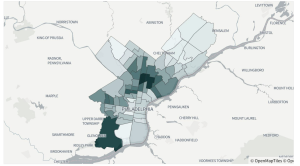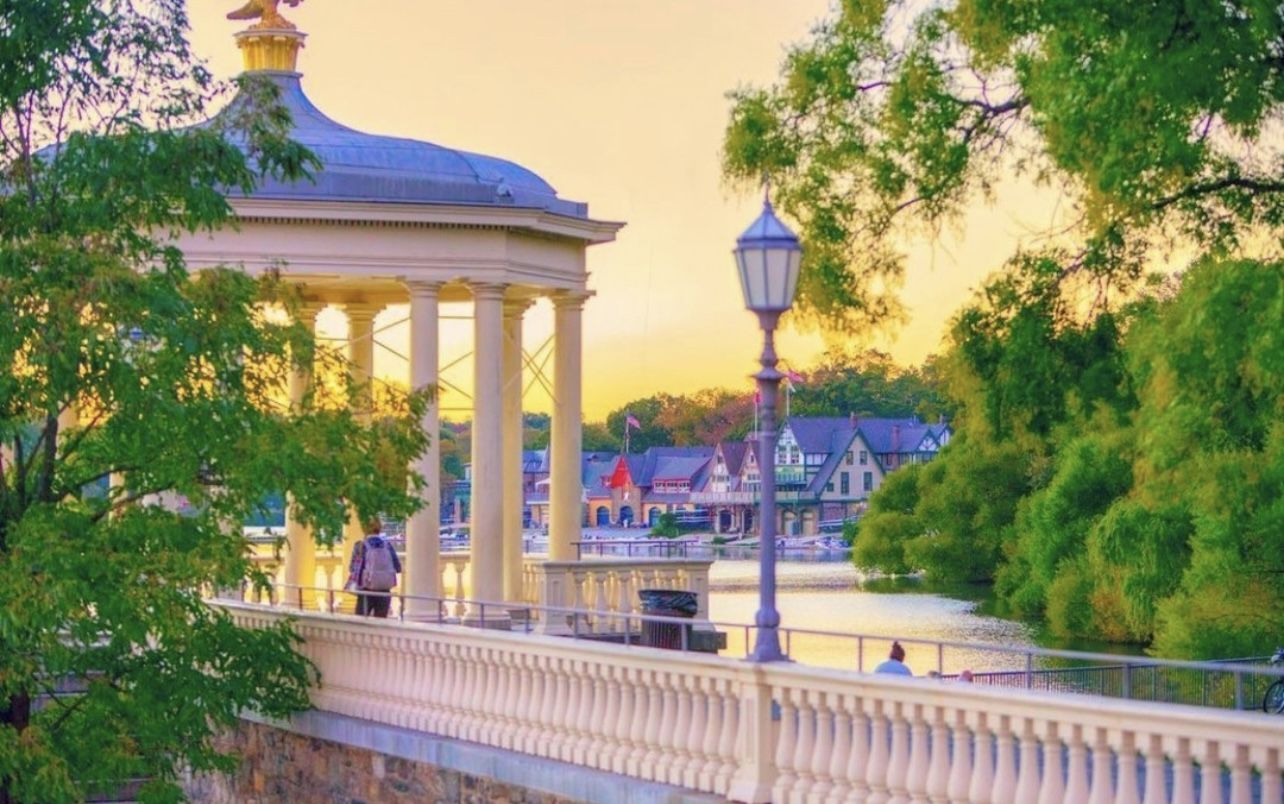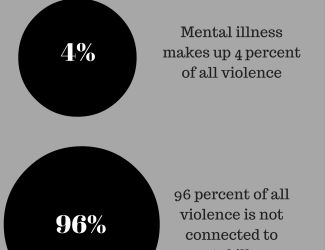Today, it’s hard to say that the city of Philadelphia is the city of brotherly love anymore.
With the rise of gun violence and crime rummaging through the streets of Philadelphia, the city you love doesn’t seem to love itself anymore.
As crimes are soaring, people of color and the city’s youth seem to be at the brunt of it.
“I feel like I have to watch my back everywhere I go. I also feel that the police are very limited but it leads to laziness which is ineffective when it comes to protecting the community,” Justin Wiley, a Philadelphia resident, said.
The numbers
Almost 95 percent of shooting victims were people of color in 2021, police records show. Black men accounted for three-quarters of both shooting fatalities and total victims.
“I’m not even proud or happy to be a resident in Philly anymore,” an anonymous source said about the violence in Philadelphia.
Since 2013, there has been a steady rise of homicides within the city, according to the Philadelphia Police Department. Police reports show that 2021 ended the year with 562 homicides, 85 percent of those were committed with a firearm. The deadliest year on record.
Fatal shootings have jumped to 95 percent compared to five years ago. In Philadelphia, shooting deaths in 2020 were 50 percent higher than the previous year.
Not every shot fired results in death. When examining both fatal and nonfatal events, there were a total of 2,327 shootings in 2021, a 76 percent increase since 2016.
“It’s a shame that you can’t feel safe or be at peace,” said the anonymous source. “Most of them are kids, teenagers… it’s awful how people just have easy access to weapons.”
In 2021, there were 486 fatal shootings and 1,846 non-fatal.

Along with homicides, the biggest spike of shootings occurred in 2020 during the pandemic, which saw 561 more shootings than the year prior.
People ages 18 to 24 made up one-fourth of 2021’s fatal and nonfatal shooting incidents.
Carjackings have nearly tripled since 2019.
The city is already on track to pass the number of carjackings from 2021, which had roughly about 750. Since Feb. 6 2022, there have been 154 carjackings over the course of 37 days.
Statistics show that between 2010-2019, there was an average of 230 carjackings each year in the city. The number increased to 409 in 2020 and rose to 757 in 2021.
Police say most carjackings are being carried out by minors between the ages of 14 and 17, and that most of them are happening at gunpoint after someone has parked their car.
Why is this happening?
To first understand why this is happening, it is important to know where the most heavily impacted areas are.
Where is it happening:
Gun violence data is often examined at the ZIP code level.
Philadelphia districts are tighter areas, so data from these areas can be helpful for community members, leaders and researchers who are looking to reduce violence. With districts, they can hone in on a specific targeted area.
However, each district covers many blocks and can group together communities that don’t necessarily have access to the same resources. The neighborhoods that people live in and the resources that they have access to can be correlated to the violence within those areas.
“Instead of seeing beautiful homes, all you see are houses that have bars and gates on their windows because they don’t feel safe,” an anonymous source said. “It’s a shame you have to look and feel like you’re in prison.”

Districts with a high concentration of shootings are likely to predict shootings in the surrounding area(s).
Just because an area sees a high concentration of shootings one year doesn’t mean it will see the same in the following years.
Shifts in areas could have to do with the pandemic altering drug markets or gang activity, as well as changes in housing values throughout the city.
The reason behind the surge is a spike in gun violence, that could take time to combat and understand. There have been several once-in-a-lifetime events all happening at the same time. A pandemic most of the generation has never experienced, economic turmoil, a nationwide uprising over racial inequity and a time of social and political unrest. All of these events can cause mass anxiety and distress which could be behind the rise of gun crime.
The increase has also been concentrated in communities of color where residents have endured higher violence levels alongside systemic issues, such as poverty. The spike has also occurred, while rapes and assaults committed without a gun have unusually declined.
With the rise of gun violence, two law enforcement trends in Philadelphia have overlapped: police have arrested fewer people, and prosecutors have secured fewer convictions in court.
In 2021, according to data published by the District Attorney’s Office, police arrested nearly 24,000 people for offenses ranging from murder to criminal mischief. The lowest total in at least six years.
So how is there a rise in crime, but a decline in arrests and convictions?
Police commissioner Danielle Outlaw said that with the department being down so many officers, with only about 6,000 officers, its lowest staffing levels in years, they cannot replicate the work of a force that was at least 10 percent larger several years ago.
“I do think the police are trying to do their best but at times there is only so much they can do,” Sydney Kesselman, another resident of the city, said. She mentions that she hopes that the police do their best to contain the violence within the city, but by doing so in the safest way so more lives aren’t lost.
What is being done in the city?
The Philadelphia City Council and Mayor Jim Kenney distributed $22 million in funding for community-based anti-violence programs, part of their $155 million anti-violence spending in the 2021 city budget.
Only about 1 in 5 shootings in the past five years have led to an arrest. To address this issue, Outlaw is launching a new unit focused on nonfatal shootings. Staffed with 30-40 detectives, they will work along-side the homicide unit to help solve these cases.
The CARES program, offers grief counseling, assistance with funeral arrangements and other services through a team of crisis responders with lived experience with gun violence
The city is preparing to mimic a version of Chicago’s READI program, which aims to reduce gun violence through a mix of cognitive-behavioral therapy, job coaching and anywhere from 12 to 18 months of paid employment.
To combat carjackings, the department has assigned uniformed and plainclothes officers to patrol carjacking hot spots, according to Outlaw. There’s also a task force dedicated to investigating these crimes.
How is it affecting the youth?
Fear, tension and unrest are some of the emotional tolls Philadelphians are experiencing, especially youth.
Research shows that violence in Philadelphia neighborhoods causes children to visit more emergency rooms and suffer a decline in their mental health.
“PTSD, depression, intentional ingestion of harmful substances and other psychiatric emergencies” are the mental health concerns that were reported for the Children’s Hospital of Philadelphia, which tied into the recency of shootings in the children’s living areas, per Penn Medicine.
The closer the proximity youth are to shootings, the higher the chance they would end up in a medical emergency.
Lack of understanding of the situation, few mental health resources and seemingly emotionally closed-off environments pile up on kids and many of them do not know how to deal with it.
Philadelphia’s unprecedented crime rates have gotten the attention of the entire nation. Now, justice and healing have to commence.




